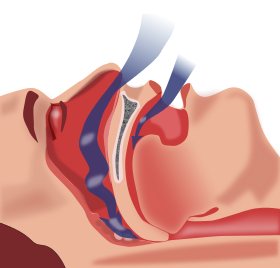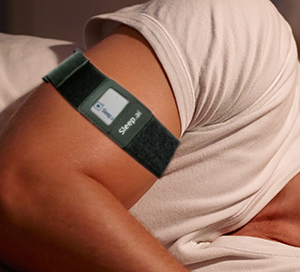
Obstructive Sleep Apnea (OSA) is caused by complete or partial obstruction of the upper airway. It is considered as a serious condition that prevents you from breathing.
Usually it is characterized by a snoring sound that stops for a short period during which the breathing stops, or nearly stops. The pause may wake you up, with a snort sound.
Obstructive Sleep Apnea can really affect the quality of your sleep, making you feel sleepy during the day. Other symptoms are headaches, irritability, anxiety, depression, increased heart rate and blood pressure, loos of libido, weight gain and heavy night sweats.
Obstructive Sleep Apnea is a sleep disorder and it affects millions of patients worldwide. It does prevent patients from having a restful night. Snoring and Sleep Bruxism are the new pre indicators for OSA.
Positional Obstructive Sleep Apnea (POSA)
If the number of obstructive sleep apnea events are more frequent in the supine position, then it is called positional obstructive sleep apnea.
Many strategies to avoid or reduce the number of obstructive sleep apnea events have been designed to prevent patients from sleeping on their back. These strategies are more effective for positional obstructive sleep apnea patients.
Possible therapies include an alarm system, a backpack with ball, behavioral therapy, a pillow with straps, and a chest-worn vibrating device.
Remedie
About 70% of all people only snore when they sleep on their back. Scientific research shows that peolple sleeping on their back can have POSA; Positional Obstructive Sleep Apnea.
This is caused by complete or partial obstruction of the upper airway. Moving to your side opens the airway. Our app detects snoring and sends a signal to the Silentsleep wearable, making it vibrate. You turn over to your side again and the snoring stops.
 Obstructive Sleep Apnea (OSA) is caused by complete or partial obstruction of the upper airway. It is considered as a serious condition that prevents you from breathing.
Usually it is characterized by a snoring sound that stops for a short period during which the breathing stops, or nearly stops. The pause may wake you up, with a snort sound.
Obstructive Sleep Apnea can really affect the quality of your sleep, making you feel sleepy during the day. Other symptoms are headaches, irritability, anxiety, depression, increased heart rate and blood pressure, loos of libido, weight gain and heavy night sweats.
Obstructive Sleep Apnea is a sleep disorder and it affects millions of patients worldwide. It does prevent patients from having a restful night. Snoring and Sleep Bruxism are the new pre indicators for OSA.
Obstructive Sleep Apnea (OSA) is caused by complete or partial obstruction of the upper airway. It is considered as a serious condition that prevents you from breathing.
Usually it is characterized by a snoring sound that stops for a short period during which the breathing stops, or nearly stops. The pause may wake you up, with a snort sound.
Obstructive Sleep Apnea can really affect the quality of your sleep, making you feel sleepy during the day. Other symptoms are headaches, irritability, anxiety, depression, increased heart rate and blood pressure, loos of libido, weight gain and heavy night sweats.
Obstructive Sleep Apnea is a sleep disorder and it affects millions of patients worldwide. It does prevent patients from having a restful night. Snoring and Sleep Bruxism are the new pre indicators for OSA.



